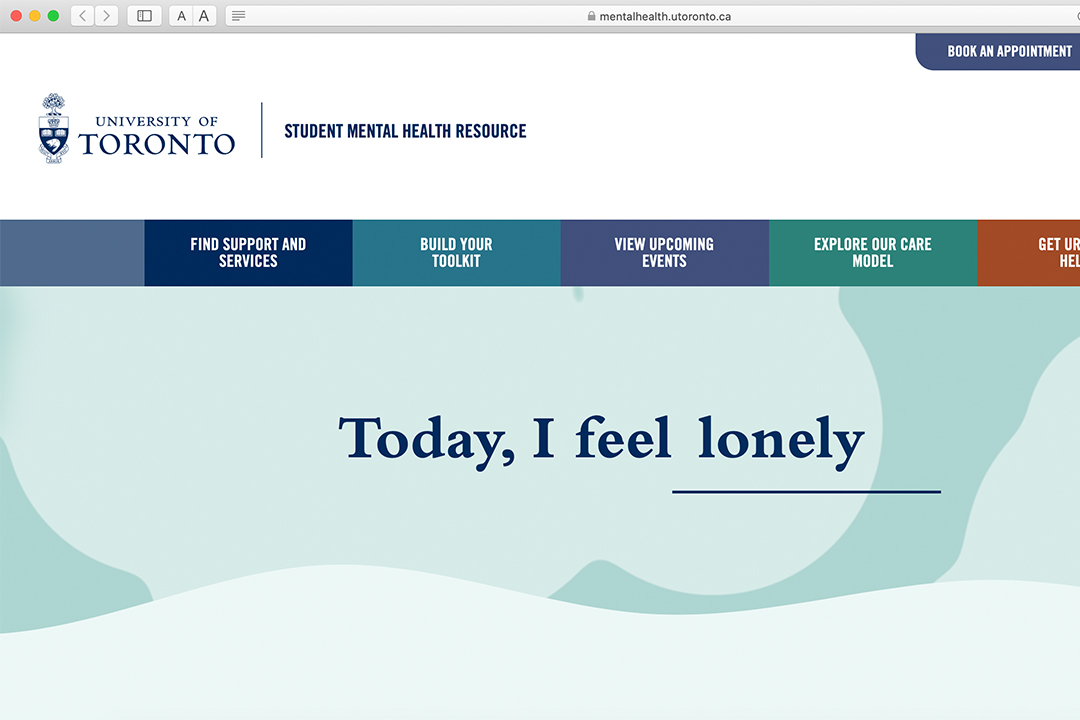U of T recently launched its updated website to help students find mental health resources and services offered at all three campuses and from partner organizations. The website, created in response to student demands from the Presidential & Provostial Task Force on Student Mental Health, is intended to be a centralized resource for mental health at the university.
While the university hopes that the website will bolster a culture of care at U of T, some students remain concerned about its usefulness and ability to tackle other stressors that contribute to mental health challenges.
Website functions
The functions of the website range from a “Book an Appointment” button in the top right corner — which provides contact information for all three campuses — to a section where students can get urgent help.
There is a search engine for resources that can be filtered by campus, provider, and need. Students can also choose their care type, which includes individual, group, and peer care, and they can choose whether they want to access a service in person or online. Additionally, a “Build Your Own Toolkit” button allows students to access other resources, such as podcasts, books, and apps.
Development and consultation
In an email to The Varsity, a university spokesperson explained that the new website is based on a stepped model of care for youth, meaning that the services offered can address different levels of care that a student might need. The model has been implemented at a number of Canadian universities with the purpose of providing flexible, clinic-based services.
“Treatment intensity can be stepped up or down depending on the level of client distress, need and readiness to engage in the growth process,” the spokesperson explained.
The university developed the website after it received feedback from students saying that, while they knew resources were available, they had trouble accessing them. It was developed in consultation with students, who tested the search engine and chose a design they felt would work best for their peers.
The U of T spokesperson also wrote that the university acknowledges the need to create a “culture of caring and compassion” at the university. The website is intended to curb stigma surrounding mental health problems and allows students to recommend resources. Those new resources will be vetted by U of T clinicians and added to the site when appropriate.
Student concerns
However, a spokesperson for the Mental Health Policy Council (MHPC) claimed that the explanation of the model is vague and that, unlike the previous version of the website, the updated website isn’t centred around the task force’s recommendations.
Furthermore, they found it concerning that a website meant to connect students to mental health resources doesn’t offer any resources to deal with underlying causes that may be affecting a student’s mental health, such as “housing and financial insecurity, racism, academic difficulties, sexual violence,” and other factors. They also pointed out that the campus police are still listed “without disclaimers” as the primary contact for urgent safety situations.
“In theory, one website that centralizes information on an institution’s key resources… is a great idea,” the MHPC spokesperson wrote. However, they continued, “this website is more visually pleasing but arguably less transparent.”


